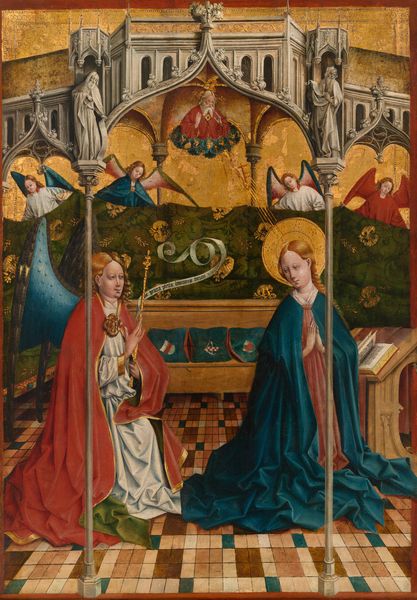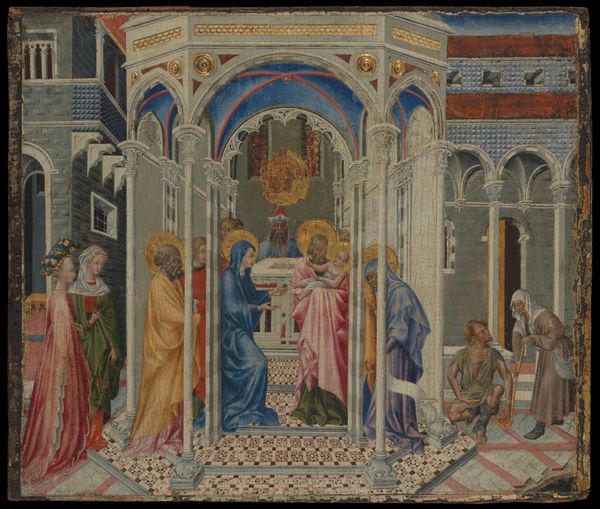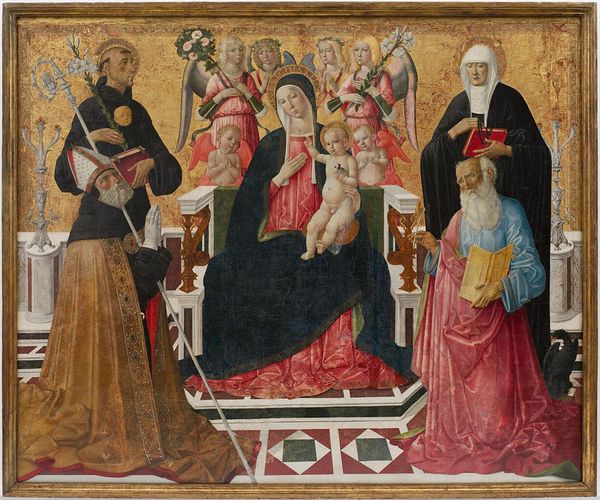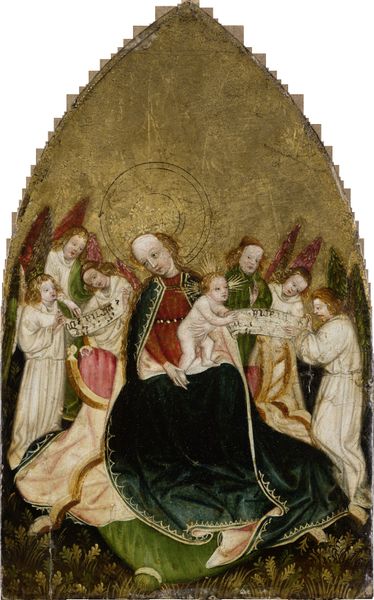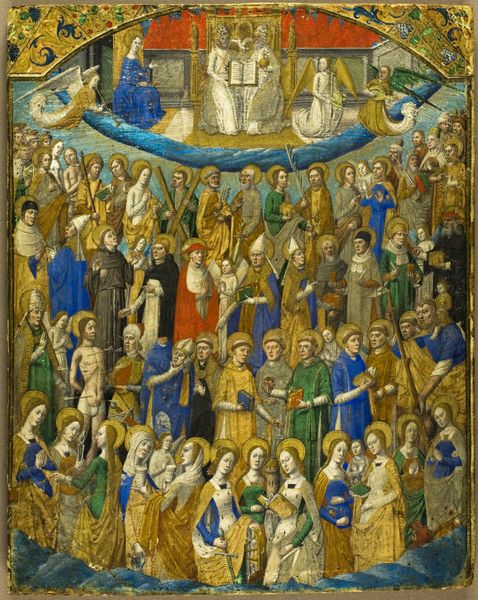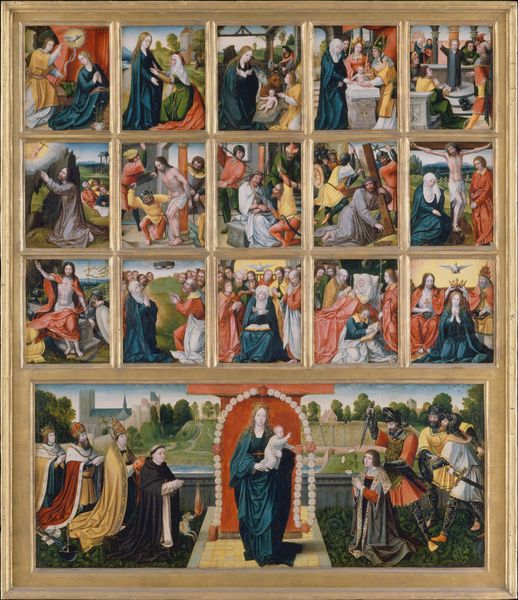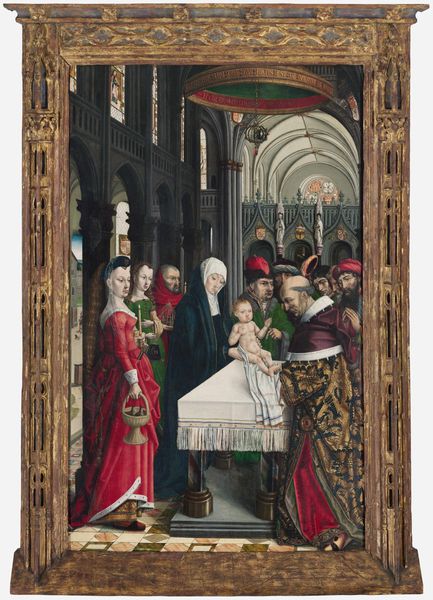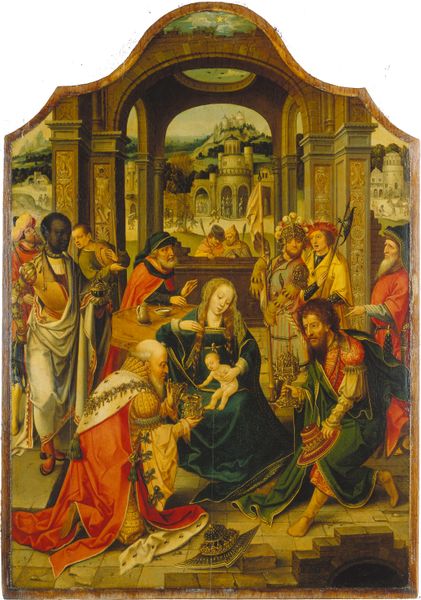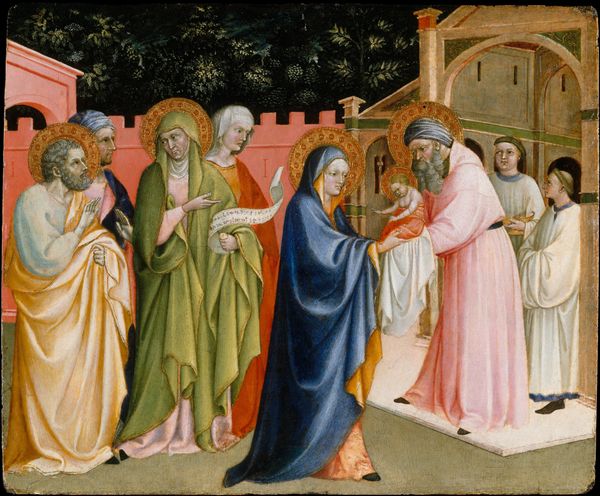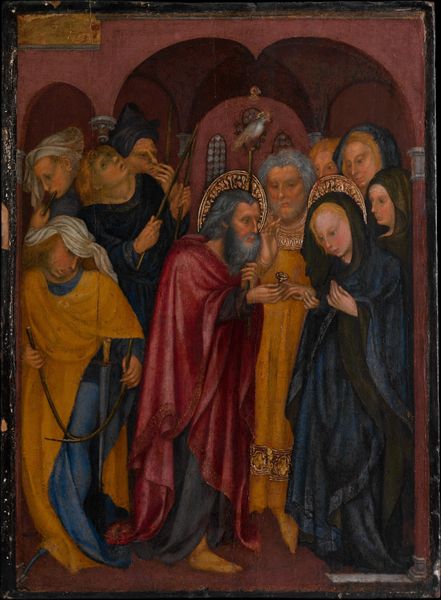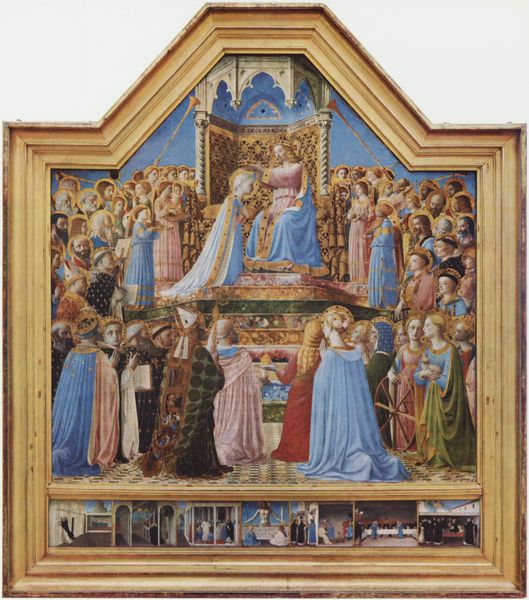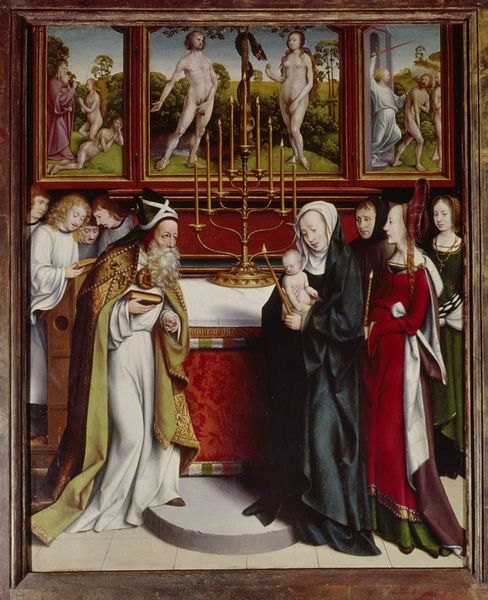
tempera, painting, fresco
#
medieval
#
narrative-art
#
tempera
#
painting
#
landscape
#
figuration
#
fresco
#
naive art
#
men
#
italian-renaissance
Dimensions: 18 7/16 × 16 1/16 in. (46.8 × 40.8 cm); painted surface 17 1/2 x 15 1/8 in. (44.5 x 38.4 cm)
Copyright: Public Domain
Giovanni di Paolo painted "Paradise" with tempera and gold on wood, and it's now here at the Metropolitan Museum of Art. The painting's composition is structured around groupings of figures, each meticulously rendered with fine lines and vibrant colors, creating a tapestry-like effect. The density of the figures against the blue backdrop lends a sense of compressed space and heightens the otherworldly atmosphere. Di Paolo’s use of gold not only signifies the divine but also flattens the perspective. This challenges conventional notions of depth and realism. This deliberate flattening draws attention to the picture plane itself, emphasizing the symbolic over the naturalistic. The varied textures and colors within each figure's clothing and expression serve as signs. These invite us to decode their roles and significance within this heavenly hierarchy. Ultimately, "Paradise" invites us to consider how the arrangement and treatment of figures can create a complex symbolic language. This pushes against the constraints of naturalistic representation and towards a world where every detail carries symbolic weight.
Comments
No comments
Be the first to comment and join the conversation on the ultimate creative platform.
